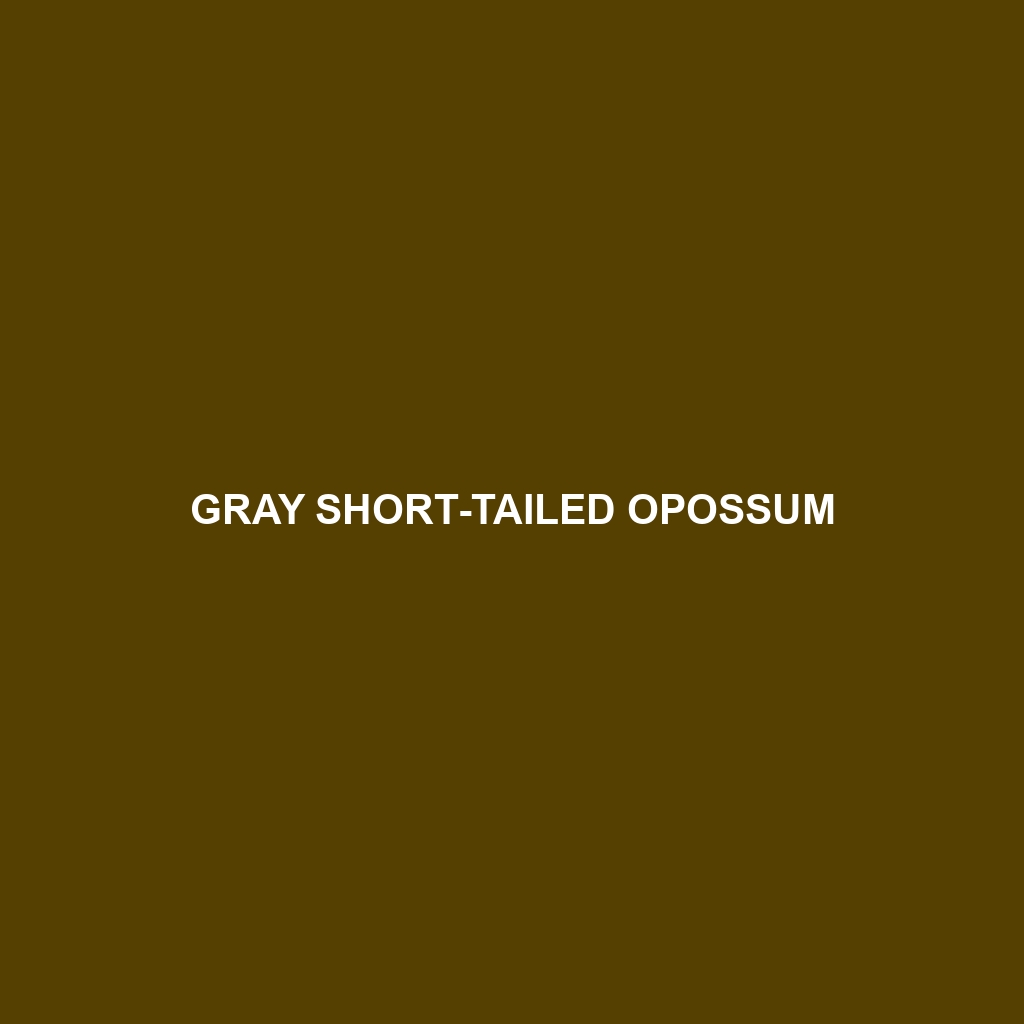Gray Short-tailed Opossum (Monodelphis domestica)
The Gray Short-tailed Opossum, scientifically known as *Monodelphis domestica*, is a small, nocturnal marsupial native to South America. Known for its compact body, short tail, and distinctive gray fur, this remarkable creature is a fascinating subject for both enthusiasts and researchers alike. Adapted to a variety of environments, the Gray Short-tailed Opossum exhibits unique behaviors and plays an essential role in its ecosystem.
Physical Characteristics:
Size: The Gray Short-tailed Opossum is relatively small, with an average body length of 12 to 18 centimeters (4.7 to 7 inches) and a tail length of 5 to 9 centimeters (2 to 3.5 inches). They typically weigh between 50 to 150 grams (1.8 to 5.3 ounces).
Coloration: This opossum has predominantly gray fur covering its back and sides, with a paler underbelly. The fur is short and dense, providing insulation.
Special Features: One of the most notable features is its short, prehensile tail, which is less than half the length of its body. This tail aids in balance and grasping objects. They also have sharp claws and dexterous forepaws, which help them in climbing and manipulating food.
Behaviors:
Social Interactions: Gray Short-tailed Opossums are generally solitary animals. They come together primarily for mating purposes and otherwise maintain individual territories. Males can be more aggressive, especially during the breeding season.
Feeding Habits: They are omnivorous, with a diet consisting of insects, small vertebrates, fruits, and vegetation. They are nocturnal foragers, using their keen sense of smell to locate food.
Ecological Role: As both predator and prey, they play an important role in their ecosystem. They help control insect populations and are a food source for larger predators.
Habitats:
Gray Short-tailed Opossums are found in a variety of habitats, including tropical rainforests, dry forests, and savannas. They are versatile and can adapt to disturbed areas, which sometimes brings them into closer contact with human settlements.
Adaptations:
Nocturnality: Being active at night helps them avoid many predators and reduces competition for food.
Climbing Ability: Their sharp claws and prehensile tail allow them to navigate trees and shrubs efficiently.
Reproductive Strategy: Females have no pouch; instead, young cling to teats on the mother’s abdomen. This unique reproductive adaptation allows them to care for multiple offspring simultaneously.
Conservation Status:
The Gray Short-tailed Opossum is currently listed as “Least Concern” by the International Union for Conservation of Nature (IUCN). They have a wide range and are adaptable to various habitats, which helps buffer against significant population declines. However, habitat destruction and fragmentation could pose future threats.
Fun Facts:
Scientific Model: The Gray Short-tailed Opossum is often used in scientific research due to its short lifespan and ease of breeding in captivity.
Immune System: They have a robust immune system that provides them with a notable resistance to snake venom and infections.
Marsupial Diversity: Unlike more familiar marsupials like kangaroos and koalas, this species lacks a pouch, highlighting the diverse reproductive adaptations within the marsupial group.
By understanding and appreciating the unique qualities of the Gray Short-tailed Opossum, we can better appreciate the diversity of life that enriches our planet and the need to protect these incredible creatures and their habitats.
